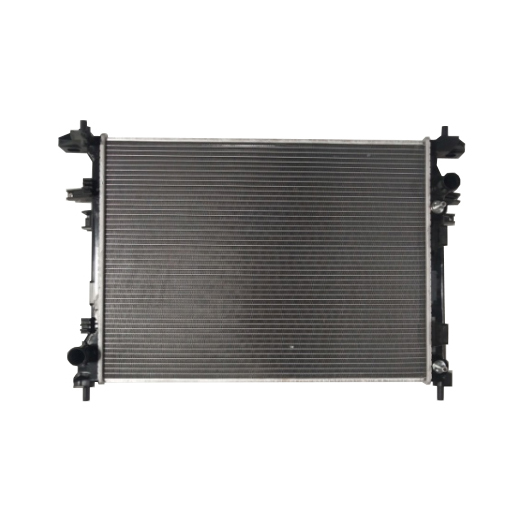Unveiling the Mechanism: How an Automotive Aluminum Plastic Radiator Functions
2024-03-01
Introduction:
In the intricate dance of vehicle mechanics, few components are as vital as the radiator, especially in maintaining engine temperature. Among the modern innovations in radiator design, the automotive aluminum plastic radiator stands out for its efficiency and durability. In this blog post, we'll unravel the inner workings of an automotive aluminum plastic radiator, exploring how it functions to keep engines cool and vehicles running smoothly.
Understanding the Basics:
Before delving into its function, let's grasp the fundamentals of an automotive aluminum plastic radiator:
- Core: The core serves as the heart of the radiator, typically crafted from lightweight aluminum. It features a network of tubes and fins that facilitate heat exchange.
- Tanks: Positioned on either side of the core, the tanks are usually made of durable plastic. They contain the coolant and provide structural support to the radiator assembly.
- Coolant: A mixture of water and antifreeze, coolant circulates through the radiator to absorb heat from the engine and dissipate it into the surrounding air.
- Seals and Gaskets: These components ensure a tight seal between the radiator tanks and core, preventing coolant leaks and maintaining pressure within the system.
Functionality of an Automotive Aluminum Plastic Radiator:
1. Heat Absorption:
- As the engine runs, it generates heat, which can reach extreme temperatures if left unchecked. The coolant absorbs this heat from the engine and becomes heated in the process.
- The heated coolant flows from the engine to the radiator through a hose, entering the radiator through the inlet tank.
2. Heat Dissipation:
- Upon entering the radiator, the coolant passes through the core, where it travels through numerous small tubes surrounded by thin aluminum fins.
- As air flows over the fins, either through natural airflow or aided by a radiator fan, heat from the coolant is transferred to the air, cooling the coolant in the process.
- The aluminum construction of the core enhances heat transfer efficiency, allowing for rapid cooling of the coolant.
3. Coolant Return:
- Cooled coolant exits the radiator through the outlet tank and flows back to the engine through another hose.
- Once returned to the engine, the cooled coolant absorbs more heat and begins the cycle anew, maintaining the engine's operating temperature within the optimal range.
4. Pressure Regulation:
- The radiator cap, typically located on the outlet tank, plays a crucial role in regulating pressure within the cooling system.
- As coolant heats up and expands, excess pressure is released through the radiator cap's pressure relief valve, preventing damage to the radiator and other components.
Advantages of an Automotive Aluminum Plastic Radiator:
- Lightweight Construction: Aluminum plastic radiators are significantly lighter than traditional copper-brass radiators, contributing to overall vehicle weight reduction and improved fuel efficiency.
- Corrosion Resistance: The plastic components of aluminum plastic radiators are highly resistant to corrosion, prolonging the radiator's lifespan and reducing the risk of leaks.
- Efficient Heat Transfer: The aluminum core of the radiator facilitates efficient heat transfer from the coolant to the surrounding air, resulting in effective engine cooling.
- Durability: The combination of aluminum and plastic materials in automotive aluminum plastic radiators results in a durable and robust construction that can withstand the rigors of daily driving.
Conclusion:
In conclusion, the function of an automotive aluminum plastic radiator is a testament to engineering ingenuity and efficiency. By absorbing heat from the engine, dissipating it through the radiator core, and returning cooled coolant to the engine, the radiator plays a crucial role in maintaining optimal engine temperature and preserving vehicle performance. With its lightweight construction, corrosion resistance, and efficient heat transfer capabilities, the automotive aluminum plastic radiator represents a significant advancement in vehicle cooling system technology, ensuring smooth and reliable operation on the road.



